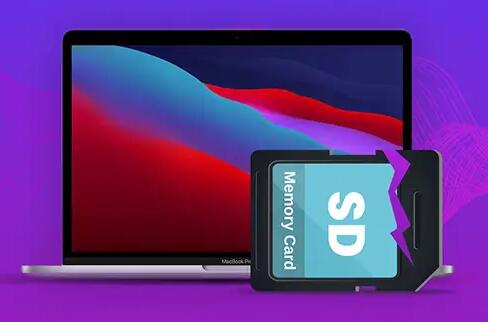Recovering an SD card for free is possible in many cases.
I. SD Card Data Loss
Reasons for Data Loss:
Physical damage: This can occur due to dropping the SD card, exposure to water, or other physical impacts. For example, if an SD card is stepped on, the internal components may be damaged, leading to data inaccessibility.
File system corruption: This can happen due to improper ejection of the SD card from a device. For instance, if you remove the SD card from a camera or a computer without using the “safely remove hardware” option (in the case of a computer), it can cause the file system to become corrupted.
Virus or malware attacks: If your device (such as a smartphone or a computer) that accesses the SD card is infected, the virus or malware may damage or delete the data on the SD card.

Types of Data on an SD Card:
Photos and Videos: These are perhaps the most common types of data stored on SD cards. For example, digital cameras and camcorders often use SD cards to store media files. Memories of vacations, family events, and important moments are often captured and stored on these cards.
Documents: Some users store documents such as PDFs, Word files, or spreadsheets on SD cards for easy transfer between devices.
Audio Files: Music, podcasts, and other audio recordings can also be stored on SD cards.
II. Free Software Options for SD Card Recovery
Panda Assistant is a versatile and efficient data recovery software designed to help users recover lost or deleted files from various storage devices. Whether you’ve accidentally deleted important documents, lost photos due to a system crash, or faced corruption of an SD card or hard drive, Panda Assistant provides the tools needed to retrieve your valuable data. With its user-friendly interface, even those with minimal technical experience can quickly navigate the software and perform recoveries with ease.
One of Panda Assistant’s key features is its ability to recover files from a wide range of devices, including internal and external hard drives, USB flash drives, memory cards, and other storage media. It also supports recovery from formatted or corrupted drives, ensuring that users can still retrieve their files even in challenging scenarios. The software offers a preview feature, allowing users to scan and preview files before proceeding with recovery, which helps ensure that the right files are retrieved.
III. Precautions Before Recovery
Stop Using the SD Card Immediately:
As soon as you realize that you need to recover data from an SD card, you should stop using it. Every time you write new data to the SD card, there is a risk of overwriting the existing data that you want to recover. For example, if you continue to take photos on a camera with a damaged SD card, the new photos may overwrite the deleted or lost data that you’re hoping to retrieve.
Backup the SD Card (if possible):
If the SD card is still somewhat accessible, it’s a good idea to make a backup of it. You can use disk – imaging software to create an exact copy of the SD card’s contents. This way, you can attempt recovery on the backup copy and preserve the original SD card in case something goes wrong during the recovery process. However, this may not always be possible, especially if the SD card is severely damaged or inaccessible.
IV. Alternative Free Methods (if the Software Doesn’t Work)
Check for Backups:
If you have previously backed up the data on your SD card, either to a cloud service (such as Google Drive, Dropbox, etc.) or to another external storage device (like another hard drive or USB flash drive), you can retrieve the data from there. For example, if you set up automatic backups of your camera’s SD card to a cloud storage account, you can log in to that account and download the backed – up photos and videos.
Contact the Device Manufacturer:
Some device manufacturers offer data recovery services or support. For example, if the SD card was used in a particular brand of digital camera, the camera manufacturer may have some resources or suggestions for recovering the data. They may also be able to direct you to authorized service centers that can handle SD card data recovery.
About us and this blog
Panda Assistant is built on the latest data recovery algorithms, ensuring that no file is too damaged, too lost, or too corrupted to be recovered.
Request a free quote
We believe that data recovery shouldn’t be a daunting task. That’s why we’ve designed Panda Assistant to be as easy to use as it is powerful. With a few clicks, you can initiate a scan, preview recoverable files, and restore your data all within a matter of minutes.
Subscribe to our newsletter!
More from our blog
See all postsRecent Posts
- Retrieve deleted videos from sd card 2025-04-25
- How to retrieve damaged sd card? 2025-04-25
- Retrieve photos from sd card 2025-04-25

 Try lt Free
Try lt Free Recovery success rate of up to
Recovery success rate of up to









